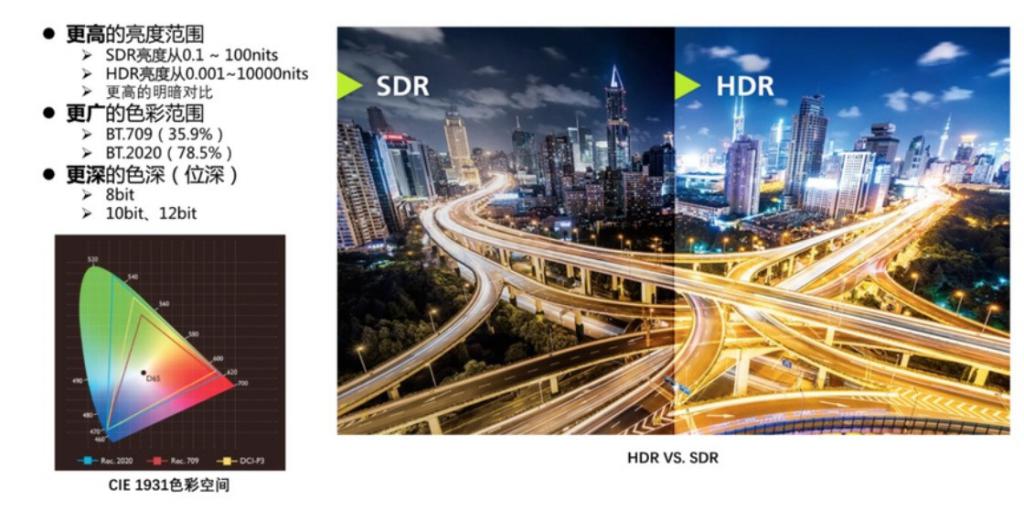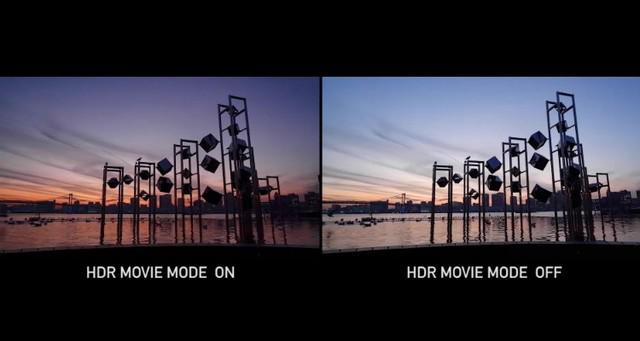Today, with the rapid development of video technology, the importance of dynamic contrast range as one of the five key dimensions to improve picture quality is self-evident. The emergence of HDR (High-Dynamic Range) technology not only breaks the limitations of traditional SDR (Standard Dynamic Range) in the performance of bright and dark details, but also pushes TV picture quality to a new level .

However, faced with the dazzling array of HDR TV products on the market, consumers are often confused about the true meaning of HDR and the changes it brings. This article aims to provide an in-depth analysis of HDR technology and explore the differences in HDR performance between flagship TVs and entry-level TVs.
HDR Technology Overview
HDR (High-Dynamic Range, high dynamic range) technology improves the display or camera's ability to express images beyond its brightness range, greatly improving the light and dark contrast of picture details. With the support of HDR, the dark details in the picture are preserved, and the bright areas are not overexposed, thus presenting rich colors and levels that are closer to the human visual experience.

The core advantage of HDR technology
- Improving the contrast between light and dark: HDR technology achieves the visual effect of "blacker black, brighter light" by increasing the brightness of bright images and reducing the brightness of dark images.
- Enhanced halo effect: Simulates the physiological response of the human eye's automatic adjustment of pupils when moving from dark to light. HDR technology can produce a halo-like transition effect, making the picture more natural and smooth.
- Improve color accuracy: HDR technology also brings a wider color gamut and higher color depth, which can present more vivid and realistic colors, making the picture more vivid and lifelike.
HDR difference between flagship TVs and entry-level TVs
Although many TVs on the market advertise HDR support, there is a significant difference in HDR performance between flagship TVs and entry-level TVs. These differences are mainly reflected in the following aspects:
- Screen quality: Flagship TVs often use higher quality display panels, such as QLED, OLED, etc. These panels are better than entry-level TVs in terms of brightness, contrast, color reproduction, etc. LCD panel used. Therefore, flagship TVs can present more detailed and realistic picture effects when playing HDR content.
- Backlight technology: Flagship TVs often use advanced backlight technologies, such as Mini LED, Full Array LED, etc. These technologies can provide more uniform and precise backlight control, further improving the contrast and brightness performance of the picture. Entry-level TVs often use simpler backlight solutions, which are difficult to achieve the same HDR effect.
- Algorithm optimization: Flagship TVs are also better at algorithm optimization. Through advanced image processing technology, flagship TVs can more accurately identify and optimize light and dark details and color performance in HDR content, making the picture closer to real scenes.

HDR technology greatly improves TV picture quality, making the picture more vivid and realistic. But not all TVs can fully display the visual feast of HDR. Flagship TVs have become the best platform for displaying HDR content due to their excellent screen, backlight and algorithm advantages.
Although high-end TVs are expensive, with the development of technology, TVs worth around 10,000 yuan can better support HDR video sources, providing consumers with more affordable options. Therefore, consumers should make informed choices based on their needs and budget. Underpriced HDR TVs don’t do well.
The above is the detailed content of The watershed between flagship and entry-level TVs: Don't talk about HDR under 10,000 yuan. For more information, please follow other related articles on the PHP Chinese website!








